What is the full form of SDSD: Secure DigitalSD stands for secure digital. The SD Association (SDA) created the Secure Digital (formally referred to as SD) proprietary non-volatile flash memory card format for usage in portable devices. 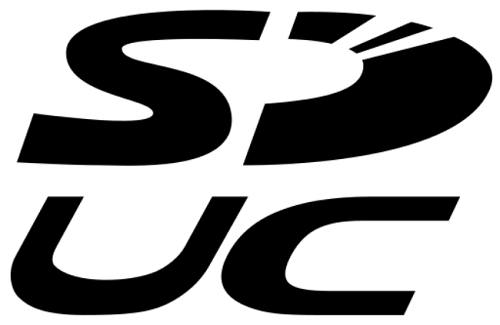
In an effort to replace MultiMediaCards (MMCs), SanDisk, Panasonic (Matsushita), and Toshiba jointly created the standard in August 1999. Since then, it has evolved into the industry norm. The three businesses came together to establish SD-3C, LLC, a company that licenses and defends intellectual property rights connected to SD memory cards, SD hosts, and related goods. HistoryFrom 1999 to 2003: CreationSanDisk, Panasonic (Matsushita), and Toshiba came to an agreement in 1999 to create and sell Secure Digital (SD) Memory Cards. The card, which evolved from the Multimedia Card (MMC), offered high memory density at the time and digital rights management based on the Secure Digital Music Initiative (SDMI) standard. It was designed to compete with Sony's DRM Memory Stick, which was introduced the year before. Developers anticipated that music providers worried about piracy would use DRM widely. 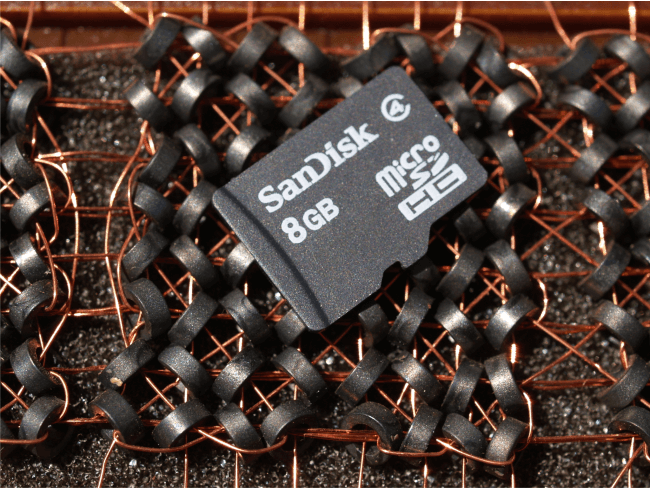
The Super Density Disc, which was Toshiba's failed attempt in the DVD format battle, is where the "SD" trademark was first created. Because of this, the D in the emblem has an optical disc-like appearance. During the Consumer Electronic Event help at 2000, three companies came together to form a single association called SD Association (SDA) in order to promote SD cards in the marketThe SD Association, which has its main office in San Ramon, California, in the United States, began with around 30 businesses and now employs about 1,000 enterprises that provide interoperable memory cards and gadgets. Early SD card prototypes were made available in the first quarter of 2000, and 32 and 64 MB manufacturing cards were made three months later. Mini Cards, 2003The SanDisk Corporation unveiled and displayed the miniSD form at the CeBIT in March 2003. The SDA approved the miniSD card in 2003 as an addition to the SD card standard for compact form factors. Even though the new cards were made specifically for mobile devices, they are typically sold with a miniSD converter that allows them to work in a slot that accepts traditional SD memory cards. Microcards: 2004-2005The initial names for the TransFlash-based microSD detachable, miniature Secure Digital flash memory cards were T-Flash or TF. TransFlash and microSD cards can both work in equipment designed for the other since they are essentially equivalent. A passive adapter is designed so that it only has metal traces connected to two sets of contact with no electric components. With the help of a passive adaptor, microSD card can also be used in devices which supports bigger SD cards because they are electrically compatible with larger SD card. MicroSD cards do not have a mechanical write protect switch, unlike bigger SD cards. Hence there is typically no means to write and protect them that is independent of the operating system. When the Chief Technology Officers (CTOs) of Motorola and SanDisk came to the conclusion that existing memory cards were too big for mobile phones, they created the microSD format. 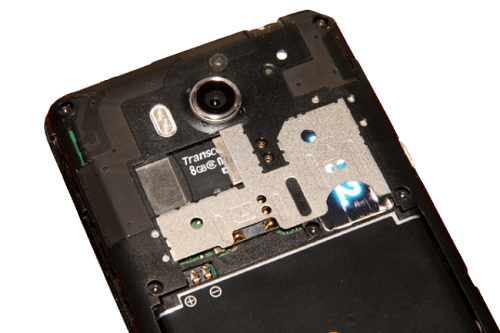
The first mobile phone to include a TransFlash (and subsequently, microSD) card was the Motorola E398. After a few years, its rivals started using microSD cards. SDHC and SDIO from 2006 to 2008A microSDHC card with 8 billion bytes is available. A magnetic core memory which was used in the 1970s, was used to support it. To store eight bytes, 64 cores were used by this technology. The card covers approximately 20 bits (or 2 1/2 bytes). The 32 GB storage capacity and required compatibility for the FAT32 file system are two advancements made by the SDHC format, which was introduced in January 2006 and introduced. The 4 GB miniSDHC, which SanDisk unveiled in September 2006. MiniSD and miniSDHC cards are compatible with devices that support miniSDHC. However, only the older miniSD card is compatible with devices that do not specifically support miniSDHC. MiniSD cards have not been manufactured since 2008 since even more compact microSD cards have dominated the market. From 2009 to 2022: SDXCCompanies like Samsung were the first to accept the SDXC standards. In their models, Samsung Galaxy S III and Samsung Galaxy Note II, this technology was built to expand the usable memory/capacity to hundreds of GBs with the help of memory cards. Memory cards have played the biggest role in upgrading the phone's storage capacity during the time of 2010s decade. 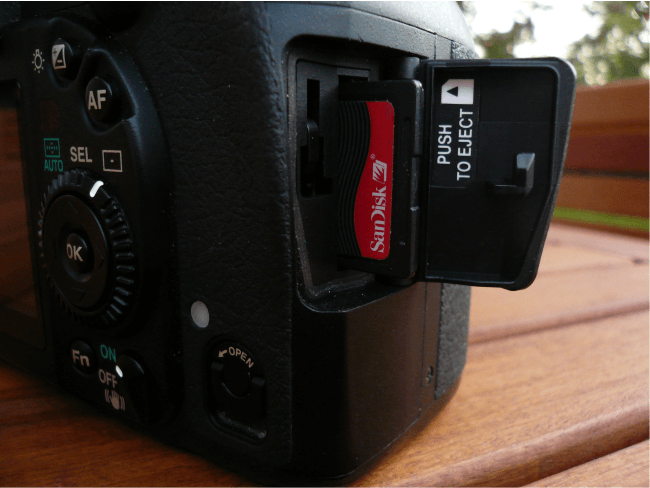
2009The exFAT filesystem is the default format for SDXC cards. At the 2009 Consumer Electronics Show (CES), SDXC was unveiled (January 7-10). At the same event, SanDisk, Sony, and Panasonic unveiled Memory Stick XC models with maximum storage capacities of 2 TB and 64 GB, equivalent to SDXC. On March 6, the Pretec organisation first introduced the SDXC card, a 32 GB card with a read and write speed of 400MB/second. The devices that actually supported the technology only came after 2010 in the market. The initial set of devices to introduce the technology were Sony Handycam HDR-CX55, Canon EOS 550D, Panasonic USB Card reader, Digital SLR, and JMicron integrated SDXC card reader. The USB 2.0 interface, which was used by the initial laptops with SDXC card readers, lacks the bandwidth to operate SDXC at full speed. 2011SDXC cards with a Speed Class 10 rating started to be shipped by Centon Electronics, Inc. (64 GB and 128 GB) and Lexar (256 GB) at the beginning of 2011. It was again Pretec who introduced memory cards starting from 8 GB to 128 GB with the speed class 16. SanDisk announced a 64 GB microSDXC card in September 2011. In 2011, Kingmax unveiled a comparable product. 2012Panasonic unveiled the MicroP2 card format for use in professional video applications in April 2012. The cards, which are classified at UHS Speed Class U1, are essentially full-size SDHC or SDXC UHS-II cards. MicroP2 cards are compatible with existing P2 card hardware thanks to an adaptor. 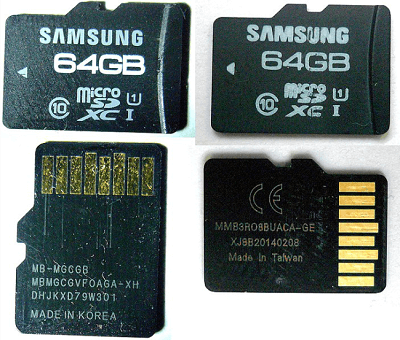
The first UHS-II compatible goods on the market were 2013 Panasonic MicroP2 cards, which were released in March 2013. The first offer comprises a 32GB SDHC and a 64GB SDXC card. Later that year, Lexar introduced the first 256 SDXC memory card, which was based on the technology of a 20nm NAND flash system. In February 2014, SanDisk introduced the first 128 GB microSDXC into the market and later, in march 2015, it introduced a MicroSDXC card with 200GB memory. SanDisk released the first 512 GB SDXC card in September 2014. SanDisk introduced a 400 GB microSDXC card in August 2017. Integral Memory introduced its 512 GB microSDXC card in January 2018. PNY introduced a 512 GB microSDXC card in May 2018. 512 GB[12] capacity MicroSD cards from Kingston were introduced in June 2018 and came in three different flavours: Select, Go!, and React. Micron and SanDisk launched their 1 TB microSDXC cards in February 2019. 2019 until the present: SDUCWith speeds of up to 985 MB/s, the Secure Digital Ultra Capacity (SDUC) standard allows cards with capacities of up to 128 TB. CapacityFive card families are offered in three sizes through Secure Digital. The original Standard-Capacity (SDSC), High-Capacity (SDHC), eXtended-Capacity (SDXC), Ultra-Capacity (SDUC), and SDIO, which combines input/output capabilities with data storage, are the five generations. The original size, the mini size, and the micro size are the three form factors. Electrically passive adapters enable the use of a smaller card in a device intended for a bigger card. The modest size of the SD card makes it the perfect storage option for more compact, portable electronic gadgets. 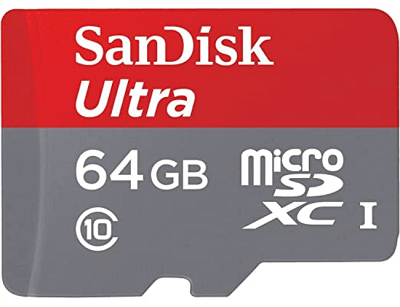
SD (SDSC)The Secure Digital Standard Capacity (SD) mark designates cards with a maximum capacity of 2 GB. The MultiMediaCard (MMC) standard was established to be improved upon by the second-generation Secure Digital (SDSC or Secure Digital Standard Capacity) card, which continued to advance but in a different way. Secure Digital adjusted multiple techniques to the MMC design:
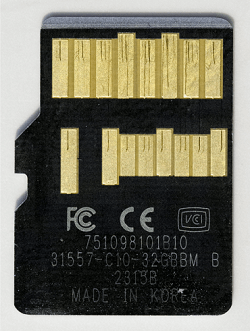
SDHCThe Secure Digital High Capacity (SDHC) mark designates cards having a capacity of more than 2 GB and up to 32 GB according to the specification. Secure digital high capacity formatting, introduced in 2006, supported only cards with storage of 32 GB. It is legal to use the SDHC brand to assure compatibility. A version 2.0 was later introduced to redefine the memory limits. Standard-capacity SD cards and SDHC cards have the same electrical and physical properties (SDSC). 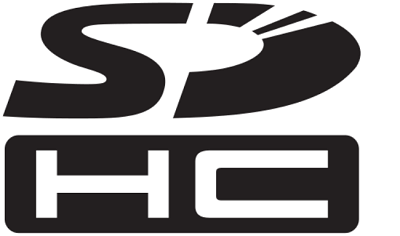
Redefining the SDSC and SDHC cards in version 2.0 gave them an additional high-speed bus mode to provide 25MB/sec by doubling the original standard speed clock. SDHC host devices must support older SD cards. There are exceptional devices that can detect SDHC and SDXC memory cards with the help of firmware updates, but the majority of older host devices do not detect them. Older Windows operating systems released before Windows 7 need updates or service packs to allow access to SDHC cards. SDXCThe Secure Digital eXtended Capacity mark designates cards with capacities of more than 32 GB and up to 2 TB, according to the standard. While the limit is only 32 GB compared to SDHC memory cards, even in its 2.0 version, SDXC cards have developed a lot. They have extended their Memory to 2 TB, first introduced in January 2009 in the 3.0 version of SD specification. SDXC uses Microsoft's exFAT file system as a required feature. 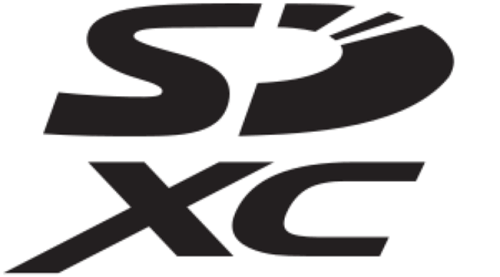
MarketThese digital cards are an effective means to store information/data of several GBs in a very small space. Therefore, memory cards are used in many electric devices due to their small size. There are large-sized memory cards also available. These are mainly in devices like cameras, video game consoles, and camcorders. These devices require frequent input and output of memory cards, and therefore, larger-sized memory cards are more suitable. On the other hand, microSD cards are used in phones, camera drones, and action cameras due to their small size. Mobile PhonesThe microSD card has boosted the market for smartphones by allowing both producers and customers more flexibility and freedom. The role of microSD cards in mobile phones is not limited to memory extension, but it also offers location-independent and higher data transfer rate service with no technicality required. This feature of the microSD card has enabled applications like photography and video recording to be easy to transfer. The user can rescue and access data saved on the memory card externally as a mass storage device. However, data stored inside bricked devices are unreachable. Uncompromised ergonomy is a benefit of USB on-the-go storage extension over that. Another advantage of a memory card is that it is independent of the phone's storage. That means if anything bad happens to the phone, the damage will not affect the memory card's storage. They are torn and worn guarded. The technical advancement of memory cards has allowed users of current mobile devices to gradually and more affordably increase their storage capacity. 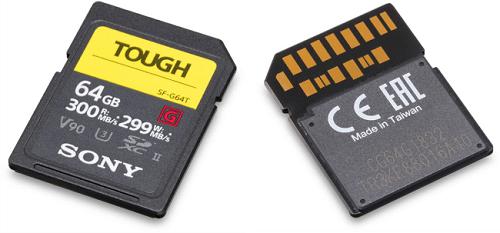
Applications may now be launched from microSD cards on recent versions of popular operating systems like Windows Mobile and Android, opening up opportunities for new SD card usage models in the mobile computing industries and freeing up internal storage space. SD cards are not the most cost-effective option when a device only requires a tiny quantity of non-volatile Memory, such as the station presets in small radios. Additionally, they might not be ideal for applications that demand faster speeds or larger storage capacity than those offered by other flash card standards, including CompactFlash. These restrictions could be overcome by developing memory technologies, including the new SD 7.0 specs that provide storage capacities of up to 128 TB. Utilizing either built-in slots or an active electrical converter, SD cards are used by many personal computers of various shapes and sizes, including tablets and cell phones. There are adapters for the parallel printer port, PC card, ExpressBus, USB, and FireWire. Active adapters also enable the use of SD cards in equipment that supports other formats, such as CompactFlash. SD cards may be inserted into a floppy disc drive using the FlashPath adaptor. In many mobile phones like Samsung Galaxy Fit, launched in 2011 and Samsung Galaxy Note 8.0, launched in 2013, their SD card set-up/compartment is below the battery cover. This way, it is easy to access as it is situated on the outer side, accessible to people. A pin-hole ejection method is used in more current mobile phones for the tray that holds the SIM card and memory card. CounterfeitMislabeled or phony Secure Digital cards that perform slower than advertised or show a false capacity are frequently seen on the market. Software technologies are available to verify and identify fake goods. Checksums (like MD5) or an attempt at compression can be used to verify the files that were copied back. The latter strategy uses fake cards to enable file reading, which results in readily compressible uniform data in the files (for example, repeating 0xFFs). Digital CamerasSD/MMC cards supplanted Toshiba's SmartMedia as the most popular memory card type for usage in digital cameras. SmartMedia had about 50% market share in 2001, but by 2005 SD/MMC had over 40% of the market for digital cameras, and by 2007 SmartMedia's share had fallen precipitously. 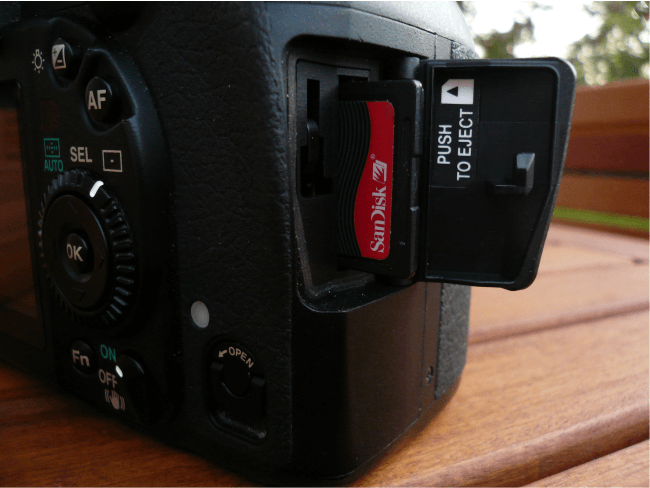
At this time, all the top producers of digital cameras, like Fujifilm, Panasonic, Samsung, Casio, Canon, Leica, Ricoh, and Sony have started using SD card technology. Before early 2010, only Sony supported Memory Stick, while Olympus and Fujifilm only supported XD-Picture Cards (xD cards). By contrast, Olympus and Fujifilm both supported SD. With an adaptor, Sony XDCAM EX camcorders and Panasonic P2 card equipment may use Secure Digital memory cards, as can Panasonic P2 card equipment with a MicroP2 converter. Personal ComputerThe computers usually use SD cards with the help of a card reader. Some have built-in slots for SD card insertion as an auxiliary storage device. However, no computer has an onboard ATA controller, enabling the SD card ATA signalling. Therefore, SD cards cannot be used as primary hard drives. On the other hand, an SD card in a USB adapter can serve as the boot disc on computers that enable booting from a USB interface if it has an operating system that permits USB access once the bootstrap is complete. 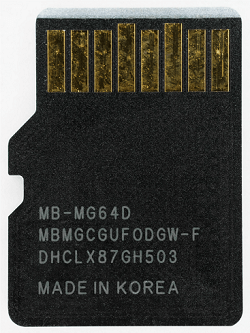
Memory cards with an integrated memory card reader provide an ergonomic advantage over USB flash drives in laptops and tablets since the latter jut out from the device. They need the user to be careful not to bump it when transferring the device, which might harm the USB port. When inserted into a computer's specific card slot, memory cards have a uniform shape and do not take up a USB port. The use of and interest in SD cards is rising among owners of classic systems like the 8-bit Atari. For instance, SIO2SD is now in use (SIO is an Atari interface for attaching external devices). One SD card with a disc capacity of between 4 and 8 GB may contain software for an 8-bit Atari (2019). Embedded SystemIn order to enable non-removable SD-style devices on printed circuit boards, the SDA standardized Embedded SD in 2008. This technology "leverag[e] well-known SD standards." However, the MMC standard became the de facto norm for embedded systems, whereas the industry did not embrace this standard. SanDisk offers such integrated memory components under the iNAND name. Most contemporary microcontrollers are equipped with SPI logic that can interact with an SD card in SPI mode and offer non-volatile storage. Even if a microcontroller doesn't have SPI functionality, bit pounding can simulate it.
Next TopicFull Form
|
 For Videos Join Our Youtube Channel: Join Now
For Videos Join Our Youtube Channel: Join Now
Feedback
- Send your Feedback to [email protected]
Help Others, Please Share










